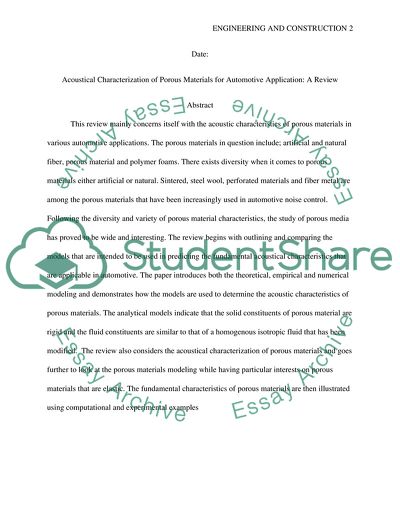Cite this document
(Acoustical Characterization of Porous Materials for Automotive Coursework Example | Topics and Well Written Essays - 2250 words - 1, n.d.)
Acoustical Characterization of Porous Materials for Automotive Coursework Example | Topics and Well Written Essays - 2250 words - 1. https://studentshare.org/engineering-and-construction/1776162-acoustical-characterization-of-porous-materials-for-automotive-application-a-review
Acoustical Characterization of Porous Materials for Automotive Coursework Example | Topics and Well Written Essays - 2250 words - 1. https://studentshare.org/engineering-and-construction/1776162-acoustical-characterization-of-porous-materials-for-automotive-application-a-review
(Acoustical Characterization of Porous Materials for Automotive Coursework Example | Topics and Well Written Essays - 2250 Words - 1)
Acoustical Characterization of Porous Materials for Automotive Coursework Example | Topics and Well Written Essays - 2250 Words - 1. https://studentshare.org/engineering-and-construction/1776162-acoustical-characterization-of-porous-materials-for-automotive-application-a-review.
Acoustical Characterization of Porous Materials for Automotive Coursework Example | Topics and Well Written Essays - 2250 Words - 1. https://studentshare.org/engineering-and-construction/1776162-acoustical-characterization-of-porous-materials-for-automotive-application-a-review.
“Acoustical Characterization of Porous Materials for Automotive Coursework Example | Topics and Well Written Essays - 2250 Words - 1”. https://studentshare.org/engineering-and-construction/1776162-acoustical-characterization-of-porous-materials-for-automotive-application-a-review.


